Businesses will be able to create and configure store products under Payments -> Products. This will allow configuring Product names, and descriptions, attaching product images and videos, defining the pricing, and configuring variants, if any.

Business users will be able to make use of the toggle at the top while creating a product to define the products that are to be displayed in the online store.
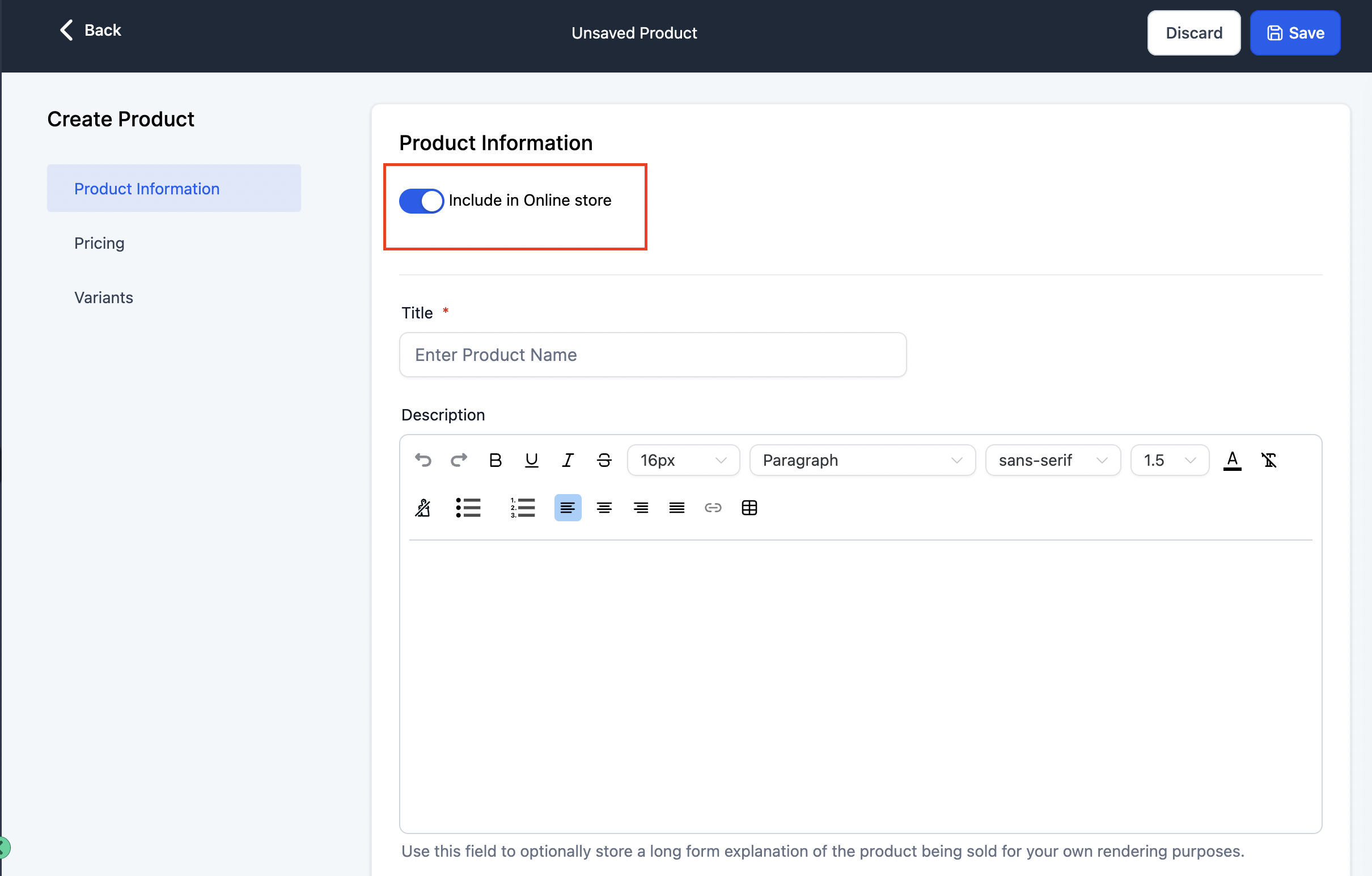
Additionally, businesses will now be able to have 3 core functionalities required for presenting products/services in their online store
Enable rich text description
- Businesses will be able to provide a rich text description for the products they are offering, including formatting, alignment, Bold, and Italics for emphasis on a few aspects, bulleted lists, or table elements. This description for the product will auto-populate on the Product details page
Attach multiple images/videos for products
- Displaying appropriate images and videos for products is a crucial part of your e-commerce store. Businesses will be able to attach multiple images and videos to products
Create variants for products
- Businesses will now be able to add variants like Size/Color/Material etc. for the products they configure. This will allow selling different variant options for the same product along with their customized prices.

An online store can be added both to an existing website as well as to a new website being created from scratch
Businesses will have the option to activate an online store by clicking on the
+icon to add elements inside the website builder
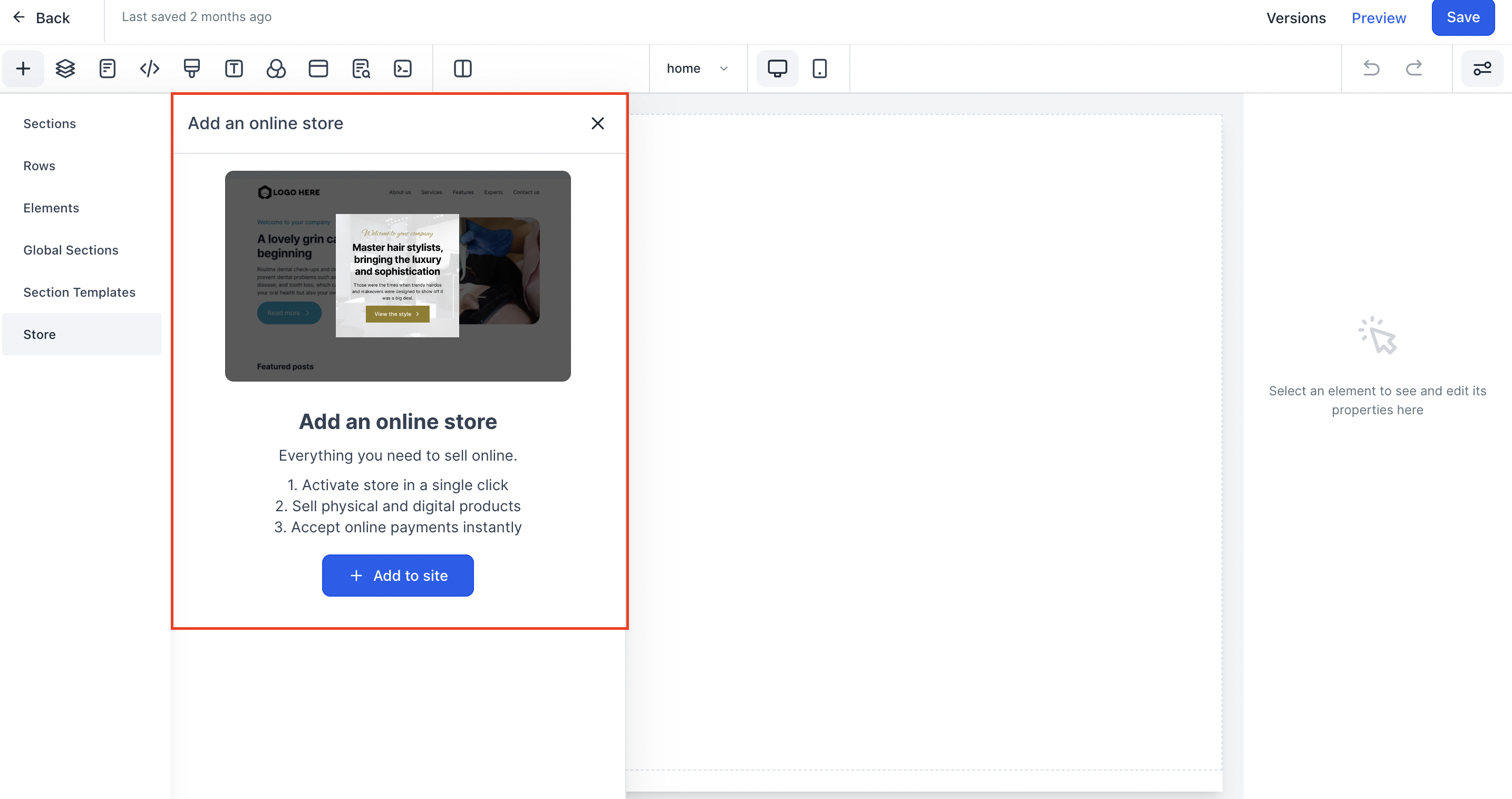
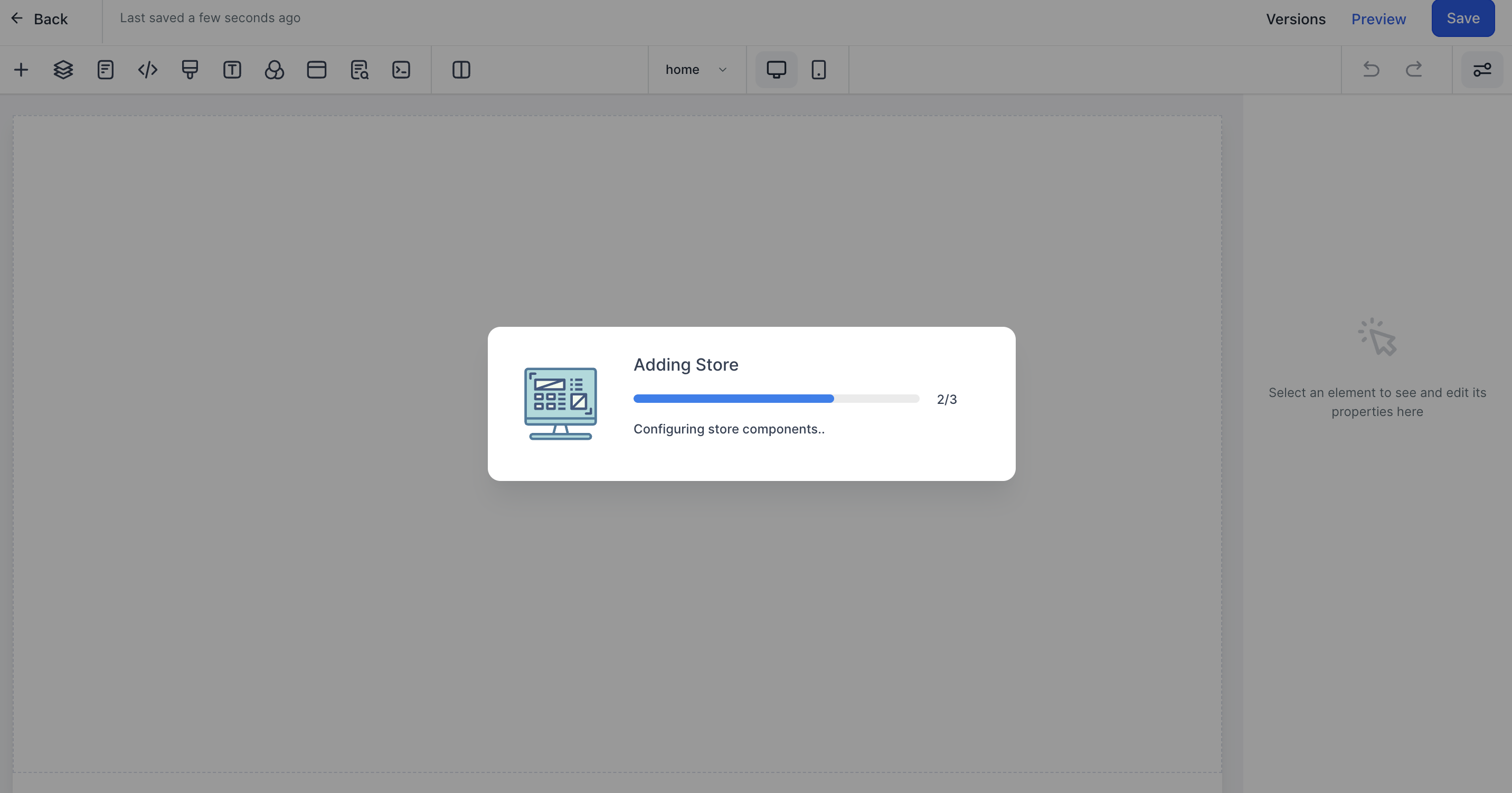
When an online store is added to a website, 5 pages are added by default to the website which will form the building blocks for your store. Businesses will be able to add any other kind of elements around the store elements that will help them in giving an overall customized experience to their customers that suits their brand needs
Products list page
- This will contain the element to showcase all your products or services to your customers.
Product details page
- This will allow the presentation of rich text product descriptions that contain useful information beneficial while making a purchase
Cart page
- This will allow customers to have a summary of the items they intend to purchase, add or remove any services before proceeding to checkout
Checkout page
- This will allow the potential leads/customers to enter their shipping information, email, and other details, apply any coupon codes, and make an online payment using a card, Apple Pay, or Google Pay
Thank you page
- This will allow the business to display an order confirmation automatically after the payment is successfully made for the purchase

Users will be able to format the elements added by default to match the brand aesthetics of their overall website. Each element will have General and Advanced settings for formatting.
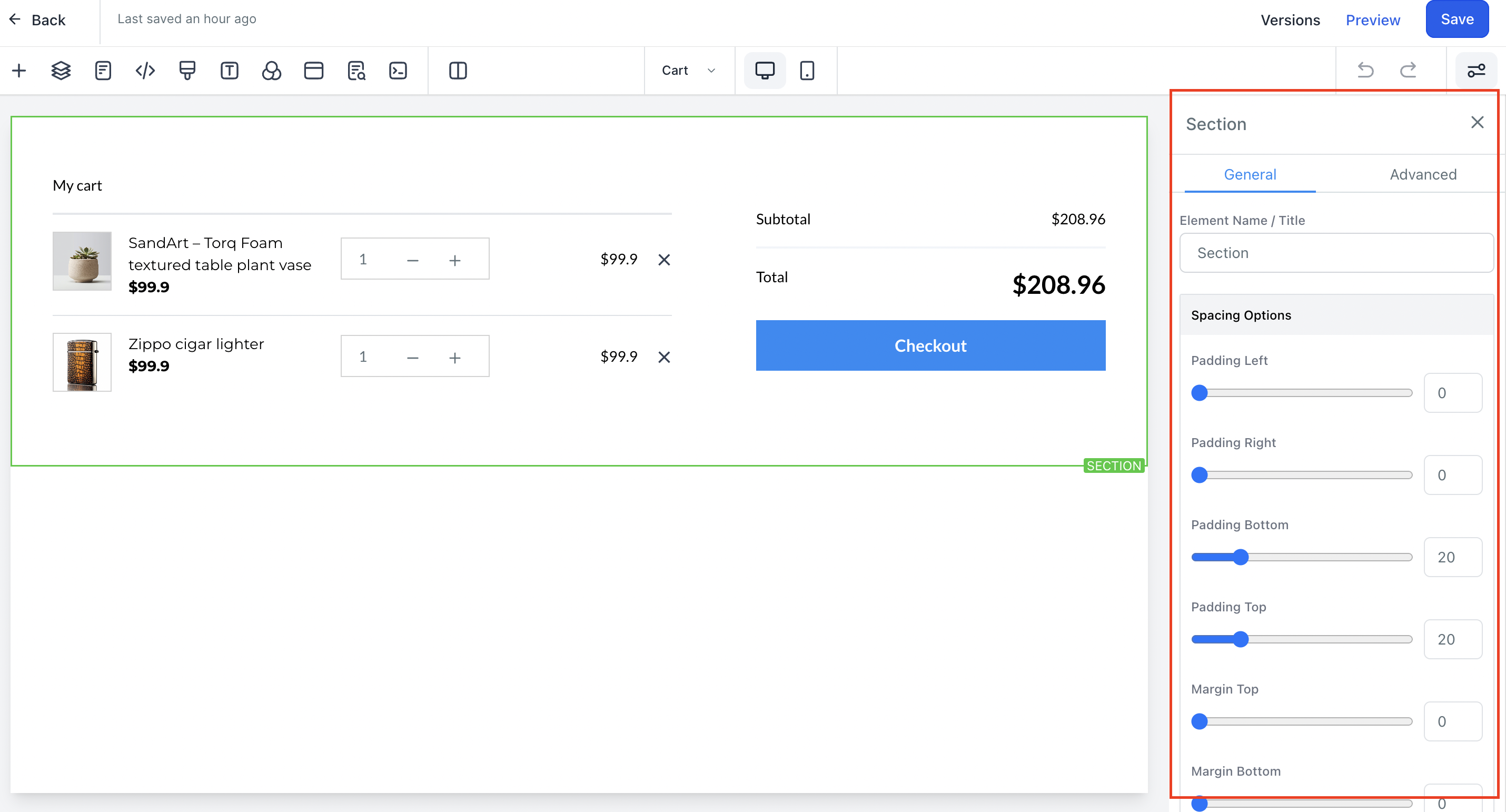
Businesses will be able to track all orders placed on the online store along with the payments made by navigating to Payments -> Orders and Payments -> Transactions. Businesses will also be able to process any refunds using the same
Businesses will also be able to mark orders as fulfilled and share shipment/tracking details with customers. By default, any order placed on the online store would be in an unfulfilled state.
Business users will have the ability to attach a tracking number, provider, and URL to track the status of the shipment. When an order is marked as fulfilled, an entry related to the fulfillment will be included in the order details, highlighting the date on which fulfillment was done, tracking details, and the number of items fulfilled in the order
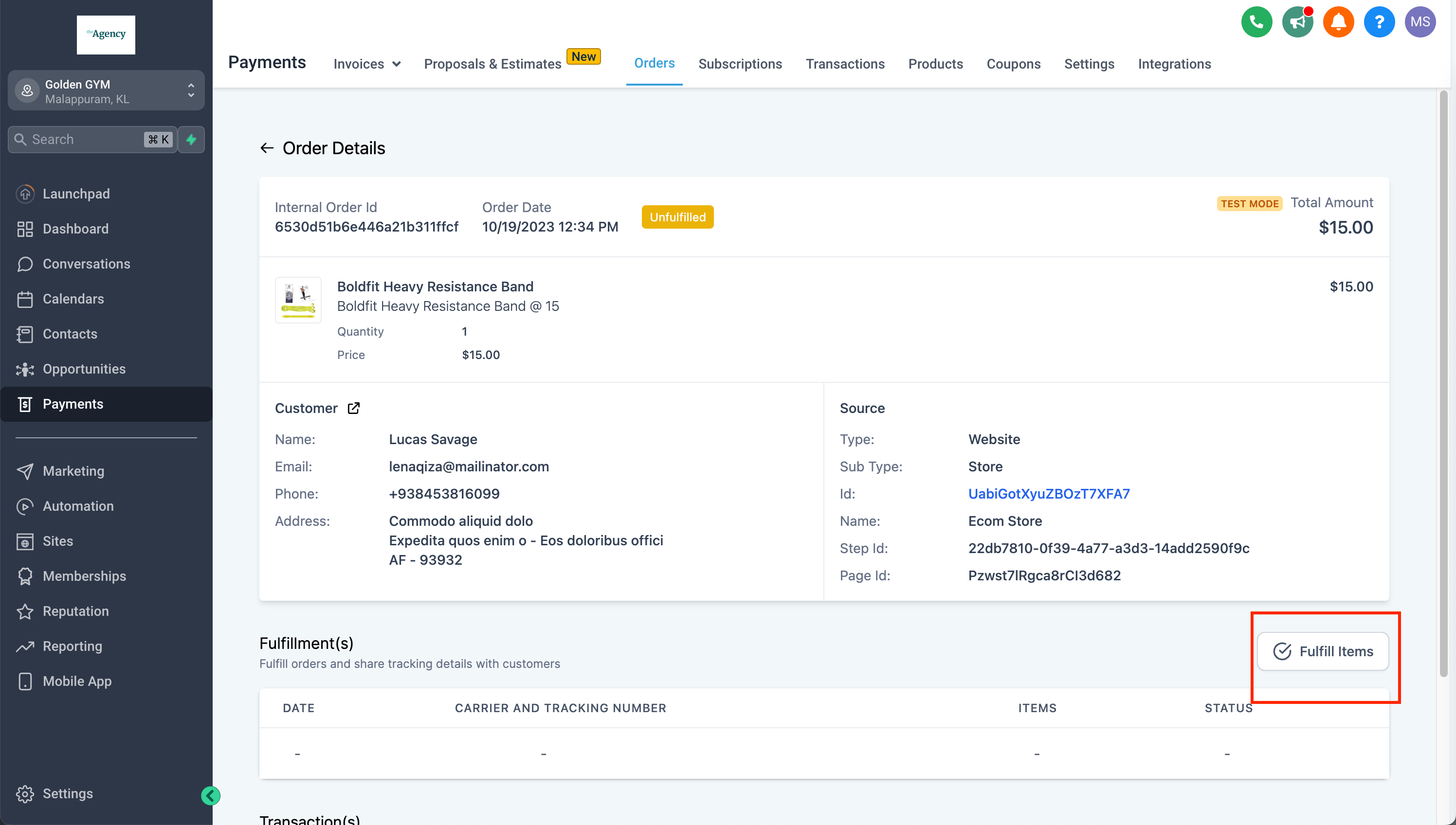
Only one-time products will be included in the online store. Businesses can still sell recurring products using funnels and order forms
Automates sales receipts, Order Submitted trigger, Shopping cart element inside email builder to auto-populate line items purchased, Payments received trigger, and coupon codes will automatically work with any online store created
All existing products will not be available in the online store by default. Businesses can choose which products they would want to showcase in the store and turn the toggle on for those respective products
Businesses will be able to track the orders submitted, payments received, initiate any refunds, etc using the Orders and Transactions lists under the Payments menu